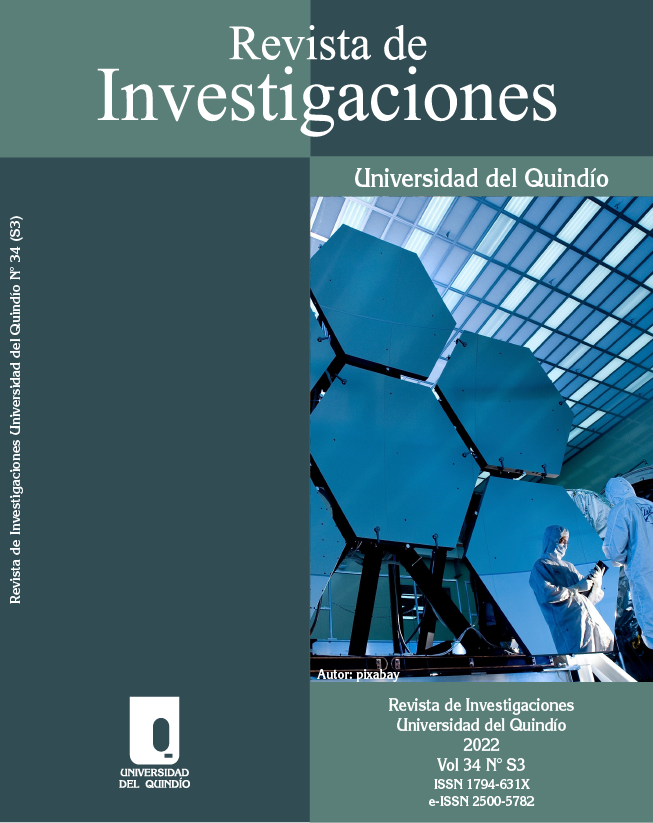Comunicación del habla en términos de cognición
DOI:
https://doi.org/10.33975/riuq.vol34nS3.1000Palabras clave:
lenguaje de señas, comunicación, lingüística cognitiva, ciencia biocognitiva, significado, conceptoResumen
El artículo presenta varios enfoques para definir la esencia de un signo en la ciencia cognitiva y la filosofía del lenguaje. Ofrece presentaciones de revisión crítica de publicaciones de investigación sobre procesos de signos. Basado en un extenso trabajo teórico en un enfoque cognitivo del proceso de comunicación, el artículo sustenta la hipótesis de que cada hablante de una lengua actúa exclusivamente en el marco de su área cognitiva. Dados los resultados, el sentido como hecho de la conciencia se encierra en él y durante la “traducción” de los sentidos no se transmiten: los signos no pueden ser considerados como portadores de sentidos en el sentido de que los sentidos forman parte de su cuerpo material están contenidos en ellos. Los componentes materiales de los signos estimulan la aparición de significados idénticos o similares, accionando esferas conceptuales análogas en las mentes comunicantes.
Descargas
Citas
Clopper, C. G., Turnbull, R., Cangemi, F., Clayards, M., Niebuhr, O., Schuppler, B., & Zellers, M. (2018). Exploring variation in phonetic reduction: Linguistic, social, and cognitive factors. Rethinking reduction, 25-72.
Collins, L., & Jisum, C. (2019). The role of linguistics studies on the political debate. Linguistics and Culture Review, 3(1), 48-59.
Colston, H. L. (2021). Cognitive Linguistics and Figurative Language. In The Routledge Handbook of Cognitive Linguistics (pp. 408-420). Routledge.
Gensini, S. (2020). Aspects of the ongoing debate on animal communication.(Zoo) semiotics and cognitive ethology. In The Extended Theory of Cognitive Creativity (pp. 199-216). Springer, Cham.
Kravchenko, A. (2022). Review of Koshelev (2020): On the Genesis of Thought and Language: The Emergence of Concepts and Propositions. The Nature and Structure of Human Category. On the Impact of Culture on Thought and Language. Cognitive Linguistic Studies, 9(1), 158-164.
Kravchenko, A. V. (2020). Linguistic semiosis and human cognition. Constructivist Foundations, 15(3), 285-287.
Luz, S., Haider, F., de la Fuente, S., Fromm, D., & MacWhinney, B. (2021). Detecting cognitive decline using speech only: The ADReSSo Challenge. arXiv preprint arXiv:2104.09356.
Pesina, S. A., Antropova, L. I., Yusupova, L. G., Zalavina, T. Y., Pustovoitova, O. V., & Terenteva, N. G. (2021). Research of communication as a sign process at the semantic and biocognitive levels. Review of judicial practice. Universidad y sociedad, 13(6), 83-88.
Pika, S., Wilkinson, R., Kendrick, K. H., & Vernes, S. C. (2018). Taking turns: bridging the gap between human and animal communication. Proceedings of the Royal Society B, 285(1880), 20180598.
Prihodko, G., & Galaidin, A. (2018). Prospects of cognitive and ecological linguistics. Scientific Journal of Polonia University, 29(4), 121-127.
Sardone, R., Battista, P., Panza, F., Lozupone, M., Griseta, C., Castellana, F., ... & Quaranta, N. (2019). The age-related central auditory processing disorder: silent impairment of the cognitive ear. Frontiers in neuroscience, 619.
Savrievna, Z. N. (2022). The Concept of Discourse as A Cognitive Phenomenon of Translation. Eurasian Research Bulletin, 7, 207-211.
Descargas
Publicado
Cómo citar
Número
Sección
Licencia
Derechos de autor 2022 Revista de Investigaciones Universidad del Quindío

Esta obra está bajo una licencia internacional Creative Commons Atribución-NoComercial-SinDerivadas 4.0.


